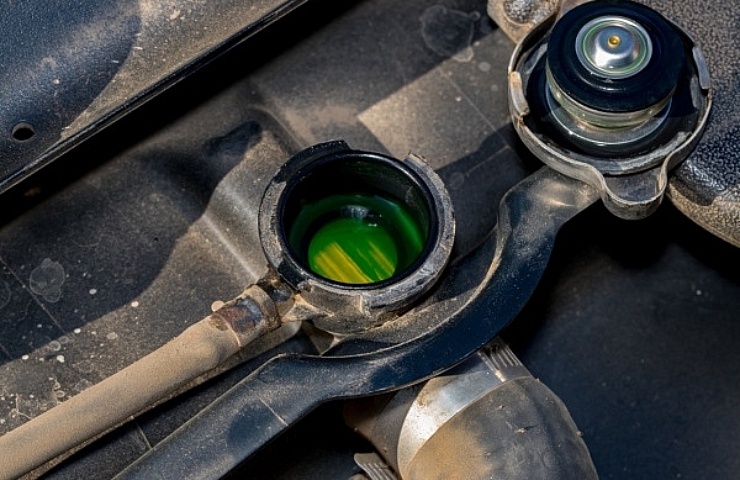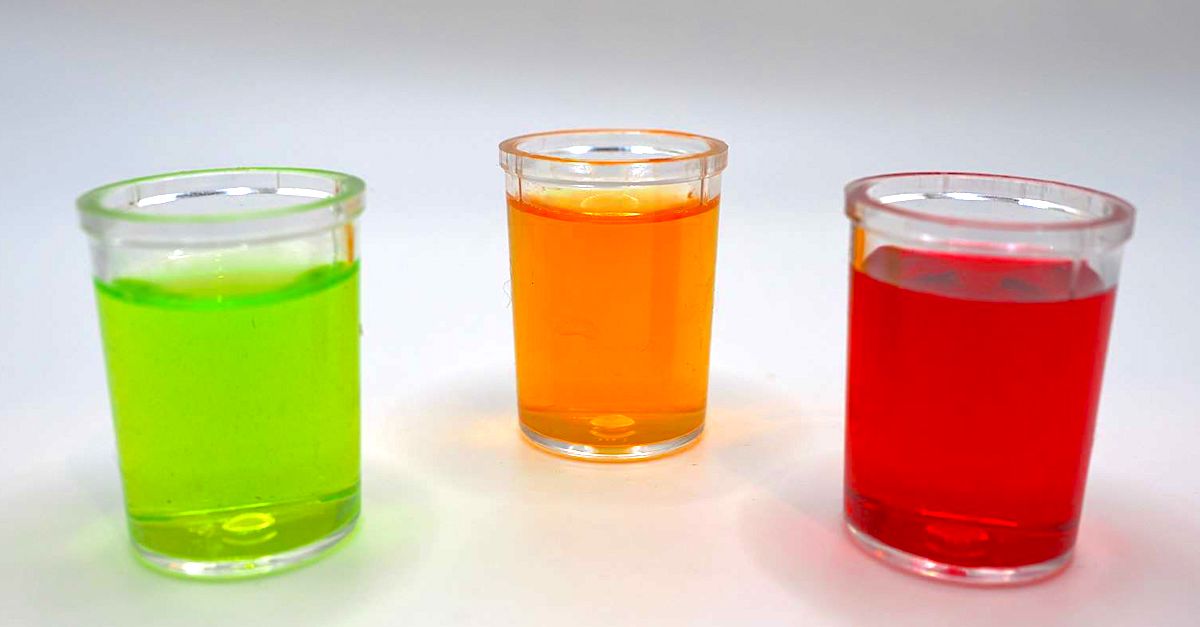Contents
Coolant Basics
Antifreeze is primarily made from ethylene glycol or propylene glycol. It also includes pH buffers to prevent rust and scale buildup in the radiator, hoses, and engine. Antifreeze is a concentrated chemical. When distilled water is added to antifreeze, it becomes coolant.
When a bottle is labeled coolant, it is pre-mixed, usually at the most common 50/50 ratio, and you can pour it straight into the cooling system.
However, you’ll want to check your vehicle’s owner’s manual for the recommended ratio. The mixture could be as high as 70 percent antifreeze in frigid climates. Since there are many different types and colors of coolant, it is necessary to know which one is right for your vehicle.
Antifreeze Colors and What They Mean
You probably have noticed bottles of green, pink, red, purple, and blue antifreeze. Knowing which color is right for your vehicle is essential, so check the owner’s manual. You can also check the color in your vehicle’s engine coolant reservoir.
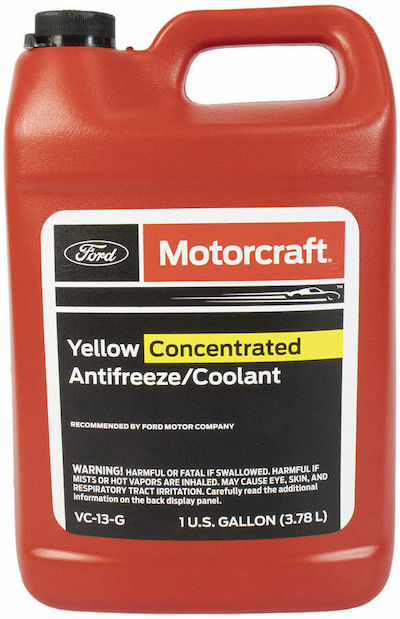
Motorcraft yellow is Ford’s factory-approved antifreeze.
Different colors indicate the inhibitor technology associated with the antifreeze. Some inhibitors are silicates, while others are organic acids, nitrite, amine, or a combination. Mixing different formulations will likely cause unwanted chemical reactions, such as thickening or making the coolant too acidic. It could also clog your cooling system.
How Often Should You Check Antifreeze Levels?
Most automakers and automotive repair facilities suggest you check your coolant levels once or twice a month. At a minimum, you should check the coolant level every six months, especially before hot summer and cold winter months. Almost every modern vehicle has a translucent plastic reservoir for the coolant.
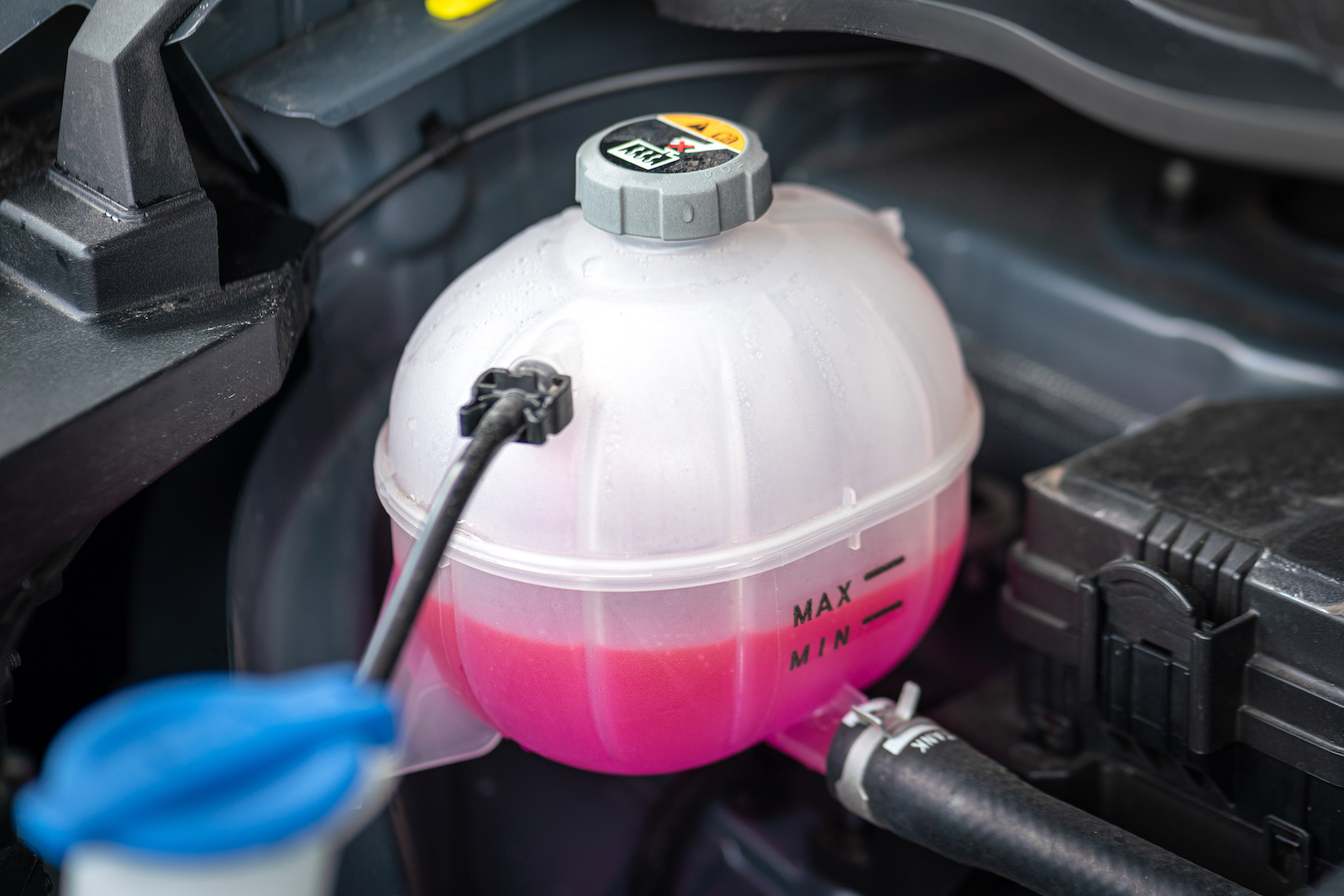
A coolant tank properly filled with pink antifreeze
- Before checking the coolant tank, be sure your vehicle is parked on level ground with the engine completely cooled down so the coolant and radiator aren’t hot.
- Open your vehicle’s hood and locate your radiator and coolant reservoir. The reservoir should be semi-translucent so you can easily see the color and level of the coolant along with the “minimum” and “maximum” fill line indicators.
- If the fluid in the reservoir is rust-colored, oily, sludgy, or has particles in it, it could indicate contamination or more severe issues, such as a leak in the head gasket. You’ll want to have it inspected by your mechanic or vehicle dealership.
- If the reservoir is empty or nearly empty, it could indicate a leaky or cracked radiator hose or a water-pump leak.
- You can also purchase a coolant tester to check that the antifreeze works effectively.
How to Safely Add, Flush and Replace Coolant
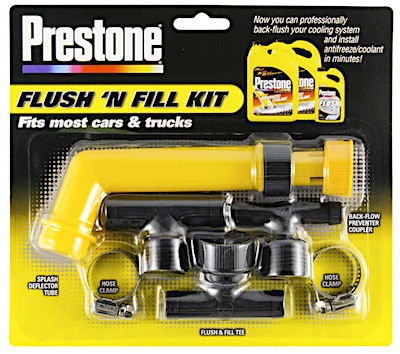
Prestone Flush ‘N Fill Kit
- Take proper safety precautions when working with chemical fluids. Wear proper eye protection and disposable gloves to prevent injury from splashing liquids.
- Consult your vehicle’s owner’s manual for the recommended fluid. Before opening the antifreeze or coolant container, read and follow all label directions for safe handling, use, and disposal.
- If the fluid level is below the maximum, simply top it up and wait until your next scheduled check.
- If the level is below the minimum line, top up the reservoir and check it daily to see if it’s low, which could mean a leak in the system.
If your engine overheated and you’re stranded, it is possible to temporarily use plain water without antifreeze mixed in. However, as soon as possible, get to a gas station or repair facility to add the correct coolant.
Antifreeze does not have an expiration date. But the anticorrosive chemicals eventually wears down inside the engine and loses effectiveness. That’s when you need to change the coolant.
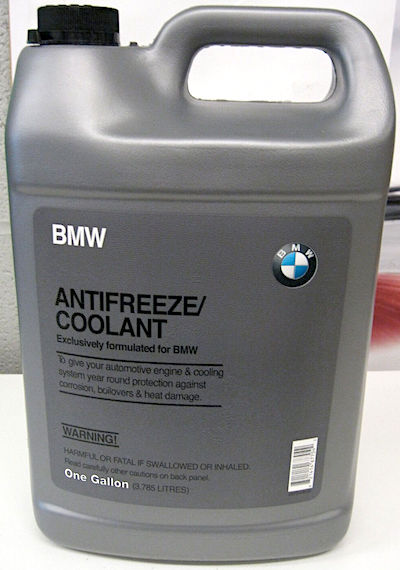
BMW coolant is blue
Depending on the antifreeze, you can expect a life span of two to five years. However, the life of the antifreeze could be shorter if the following signs of a coolant leak appear:
- The coolant light on your instrument panel comes on, indicating a low coolant level or the engine running too hot.
- The engine temperature gauge indicates that your vehicle is running hot.
- The vehicle leaves a puddle of colored fluid on the driveway.
- There is a sweet smell in or around the vehicle.
- The vehicle’s heater works intermittently.
You can purchase coolant chemical strips to test the condition of your fluid periodically. They’re affordable, simple to use, and indicate if the coolant has become acidic, which would mean it’s time for a change.
Disposing Used Antifreeze
New or used ethylene glycol antifreeze is highly toxic. Used antifreeze is loaded with heavy metal contaminants because it was circulated throughout your vehicle’s cooling system.
You should not pour antifreeze down the drain, in the toilet, or on the ground. Take the used fluid to a local automotive repair shop for disposal. Do not allow the fluid to make contact with your skin. Wear protective clothing and rubber or latex gloves.
Earth911.com has a locator for finding the recycling center nearest you that takes used coolant.
Do not store contaminated and uncontaminated antifreeze together. Once you have safely stored the antifreeze as directed, make absolutely certain it is safely protected from children and pets.
Shop now for antifreeze
